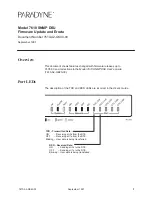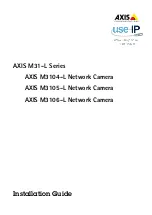
110
to the portal server’s web authentication homepage. For extended portal functions, authentication
clients must run the portal client software.
2.
On the authentication homepage/authentication dialog box, the user enters and submits the
authentication information, which the portal server then transfers to the access device.
3.
Upon receipt of the authentication information, the access device communicates with the
authentication/accounting server for authentication and accounting.
4.
After successful authentication, the access device checks whether there is a security policy for the
user. If not, it allows the user to access the Internet. Otherwise, the client communicates with the
access device and security policy server for security check. If the client passes security check, the
security policy server authorizes the user to access the Internet resources.
NOTE:
An authentication client uses its IP address as its ID. To avoid authentication failures due to address translations,
make sure that there is no Network Address Translation (NAT) device between the authentication client, access
device, portal server, and authentication/accounting server when deploying portal authentication.
Only a RADIUS server can serve as the remote authentication/accounting server in a portal system.
To implement security check, the client must be the iNode client.
Portal system using the local portal server
System components
In addition to use a separate device as the portal server, a portal system can also use the local portal
server function of the access device to authenticate web users directly. In this case, the portal system
consists of only three components: authentication client, access device, and authentication/accounting
server, as shown in
Figure 41
Portal system using the local portal server
Authentication client
Authentication/accounting
server
Access device with embedded
portal server
NOTE:
A portal system using the local portal server does not support extended portal functions. You do not need to
configure any security policy server for it.
The local portal server function of the access device implements only some simple portal server functions. It only
allows users to log on and log off through the web interface. It cannot completely take the place of an
independent portal server.
Protocols used for interaction between the client and local portal server
HTTP and HTTPS can be used for interaction between an authentication client and an access device
providing the local portal server function. If HTTP is used, there are potential security problems because
HTTP packets are transferred in plain text; if HTTPS is used, secure data transmission is ensured because
HTTPS packets are transferred in cipher text based on SSL.
















































